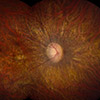With May being Skin Cancer Awareness Month and in tandem with our event Wednesday co-hosted with the Congressional Families Cancer Prevention Program, The Hazards and Allure of Indoor Tanning Beds on College Campuses we are running a series on skin cancer. Be sure to check back daily for posts on skin cancer including how you prevent and detect it. Enjoy! In 2009, upon review of the science on tanning beds and cancer, the International Agency for Research on Cancer assigned tanning beds a class 1 carcinogen, joining tobacco and asbestos in the highest classification of harm. In spite of this development, skin cancer rates have steadily climbed over the last 3 decades. Rising prevalence is seen especially in young women, with an 8-fold increase since 1970. Melanoma, the deadly form
Category: HEALTHCARE/MEDICAL
Stem cell switch on the move
The roots of a plant are constantly growing, so that they can provide the plant with water and minerals while also giving it a firm anchor in the ground. Responsible for these functions are pluripotent stem cells. In order to avoid differentiation and to remain pluripotent, these stem cells are dependent on signals from their neighboring cells. These signals are generated by only a small group of slowly dividing cells in the so-called quiescent centre inside the root. Biologists can now demonstrate how signals in plant roots determine the activity of stem cells.
In Washington State: It’s not NICE, but it’s good.
Back in 2006, the state of Washington enacted a law creating the Washington State Health Technology Assessment Program. Since 2007, the state’s Health Care Authority has administered a Health Technology Clinical Committee (HTCC)–composed of eleven independent health care professionals who review information and render decisions at open public meetings. They determine whether and how selected health technologies (medical and surgical devices and procedures, medical equipment, and diagnostic tests) are covered by several state agencies. Participating state agencies include the Health Care Authority; Department of Social and Health Services (Medicaid); Labor and Industries; Department of Corrections; and Department of Veterans Affairs. In some respects, the program is analogous to the United Kingdom’s National Institute for Health and Care Excellence (NICE), which performs similar functions for the National Health Service.
Draft recommendations on screening mammography continue to stir debate
The release of new guidelines on mammography never fails to renew the heated controversy over the potential benefits and harms of this procedure. The latest draft guidelines from the U.S. Preventive Services Task Force (USPSTF) are no exception. Various expert bodies have already taken conflicting positions on them. You can have your say, too, if you hurry — public comment on the draft closes today. Screening mammography is done in healthy women to spot hidden breast cancer. Some expert groups say that women should begin having regular mammograms at age 40, others set the start age at 50. The age at which women should stop having mammograms is also disputed. The USPSTF is an independent panel of experts in primary care and prevention. It is charged with making
Gene Therapy for Eye Disease Shows Benefits and Limitations
Gene Therapy for Eye Disease Shows Benefits and LimitationsAn experimental therapy for an inherited disorder that causes blindness improves vision, but the improvement declines with time. The findings offer insights for future therapies.
Landscape of Gene Expression in the Human Body
Landscape of Gene Expression in the Human BodyA new resource allows scientists to examine how genomic differences affect gene activity in tissues and organs across the body—and how that activity influences susceptibility to diseases such as cancer, heart disease, and diabetes.
Controlling Brain Circuits in Mice
Controlling Brain Circuits in Mice Researchers developed a tool that can turn specific sets of neurons on and off in mice to affect behavior. The technology can help scientists study mental health and disorders.
Reinventing palliative care for patients with dementia
Unfortunately, certain diseases make it difficult for health professionals to deliver care in optimal ways. Those diagnosed with dementia have trouble thinking clearly and putting their thoughts together. They tend to have trouble remembering past events clearly and may find themselves disoriented and confused. The experience of dementia can often be painful not only for those living with dementia, but also for their family and friends. Because dementia disrupts the cognitive abilities of these individuals, it can make it difficult for clinicians and caregivers to deliver care that meets the needs of these patients. MORE: THE ASSISTED DYING DEBATE Mental health researchers at St. Joseph’s Healthcare Hamilton are working towards the best ways to deliver care to geriatric patients with dementia. Dr. Carrie McAiney and her research
Human stem cells may improve bone healing in diabetics
Adding stem cells from human bone marrow to a broken diabetic bone enhances the repair process, increasing the strength of the newly formed bone, according to a laboratory-based study presented at…
Scientific research: Association between indoor tanning bed use and skin cancers
With May being Skin Cancer Awareness Month and in tandem with our event Wednesday co-hosted with the Congressional Families Cancer Prevention Program, The Hazards and Allure of Indoor Tanning Beds on College Campuses we are running a series on skin cancer. Be sure to check back daily for posts on skin cancer including how you prevent and detect it. Enjoy! There is mounting scientific research that shows an association between indoor tanning bed use and the risk of developing melanoma and non-melanoma skin cancers. I believe that significant public health efforts to reduce indoor tanning could greatly reduce the burden of skin cancer. I have spent the past several years developing a research program related to better understanding the decision to use indoor tanning beds
Finding loopholes in the genome
R-loops, thought to initiate cellular mutations, genome breaks and diseases, may be identified with an accuracy of between 80-90 percent at lower costs and effort.









